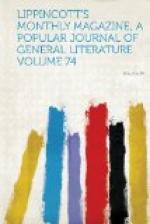The union of Hungary with the house of Habsburg has always been personal rather than constitutional. The Hungarians claimed independence in all municipal and purely administrative matters. Moreover, during the Thirty Years’ war, and even later, a large portion of the land was in possession of the Turks and their allies, the Transylvanians, with whom the Hungarians were in sympathy. The first great siege of Vienna by the Turks was in 1529—the last, and by far the most formidable, in 1683. The city escaped only through the timely assistance of the Poles under Sobieski. Ten years later the tide had changed. The Austrian armies, led by Prince Eugene, defeated the Turks in a succession of decisive battles, and put an end for ever to danger from that quarter. Hungary and Transylvania became permanent Austrian possessions.
Amid such alternations of fortune the growth of Vienna was necessarily slow. In 1714, after six centuries of existence, its population amounted to only 130,000. The city retained all the characteristics of a fortress and frontier-post. The old part, or core, now called the “inner town,” was a compact body of houses surrounded by massive fortification-walls and a deep moat. Outside of this was a rayon or clear space six hundred feet in width, separating the city from the suburbs. These suburbs, Leopoldstadt, Mariahilf, etc., now incorporated with the inner city in one municipal government, were then small detached villages. From time to time the rayon was encroached upon by enterprising builders, with the connivance of the emperor or the garrison commander. The disastrous wars with France at the end of the last century and beginning of the present were in reality a gain to Vienna. Napoleon’s bombardment and capture of the city in 1809, before the battle




